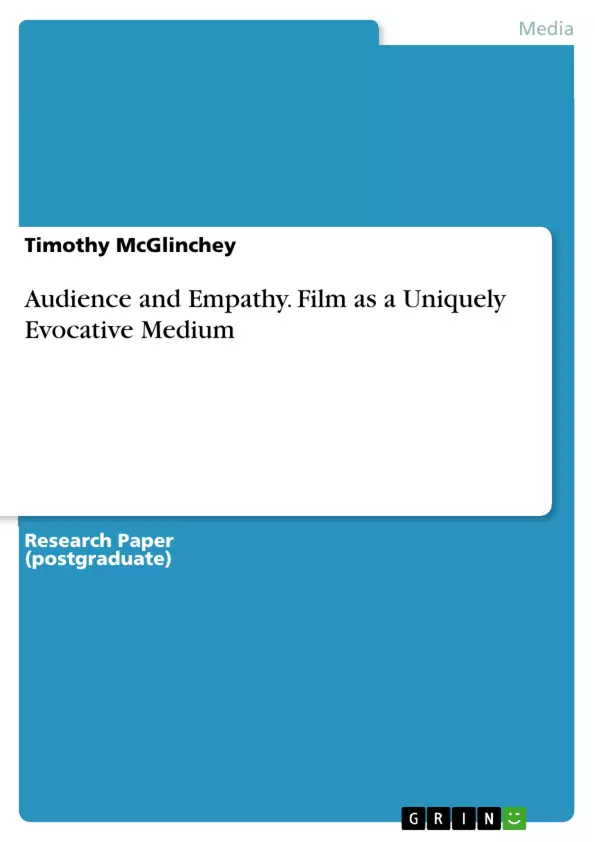This project seeks to scrutinise empathy’s role in the film viewing experience with a focus on emotional response, whilst specifically investigating its impact in the context of fiction film. And so raises the primary research question: To what extent, and how, is fictional film capable of eliciting emotion in its audience?
An individual’s capacity to not only acknowledge, but rather share and vicariously experience the emotions of another, is a truly remarkable psychological phenomenon.
This process of empathy, as it is above defined, is especially intriguing once removed from the context of human interaction, and in fact recognised within the seemingly disconnected dynamic of the fictional film viewing experience. Despite the appearance of what many may consider limitations to empathy in film viewing, such as the audience’s knowledge of the inauthentic, staged nature of the medium, it remains clear that filmic narratives can still be affectively experienced by their viewers.
Table of Contents
- Introduction
- Methodology
- Literature Review and Project Outline
- Analysis
- Is Empathy Enough?
- Film-viewing and Relationship
- Conclusion
Objectives and Key Themes
This project aims to examine the role of empathy in the film viewing experience, specifically focusing on emotional response in the context of fiction film. The primary research question is: To what extent, and how, is fictional film capable of eliciting emotion in its audience?
- The nature and measurement of emotional response in film viewing
- The impact of subjectivity and individual interpretation on empathy and viewer reactions
- The barriers and limitations that may influence the affective response to film
- The role of the film medium in evoking empathy and emotional engagement
- The relationship between film content and audience emotional response
Chapter Summaries
The introduction delves into the concept of empathy and its relevance to film viewing, highlighting the unique ability of film to evoke emotional responses despite its fictional nature. It outlines the project's primary research question and identifies key areas of investigation.
The methodology chapter discusses the challenges of defining and measuring empathy and affect. It outlines the research methods employed, including a film screening, questionnaires, and a focus group. The chapter also introduces the film selected for analysis, "Pay It Forward," and provides details about the participants involved.
The literature review and project outline chapter examines the existing body of research on empathy and emotional response to film. It highlights the diverse perspectives and approaches from various disciplines, including film studies, philosophy, and anthropology.
Keywords
Key terms and concepts explored in this project include empathy, emotional response, film viewing, fiction film, affective experience, subjectivity, interpretation, film content, audience engagement, and methodology.
- Quote paper
- Timothy McGlinchey (Author), 2016, Audience and Empathy. Film as a Uniquely Evocative Medium, Munich, GRIN Verlag, https://www.grin.com/document/322771



